There was much anticipation amongst Malaysian riders the past two years but it is finally here, the 2021 Suzuki GSX-R1000R, priced at RM110,280 sans road tax, insurance and registration. Suzuki two-wheelers have a legendary reputation amongst Malaysian sports riders, dating back to the days of the original air-cooled GS, then GSX motorcycles.
Ask any local rider over the age of 50 and they will regal you with memories of the power of the GSX 16-valve mill. The launching of the GSX-R, first in 750 then 1100 variants, signalled the beginning of specialised motorcycles, designed to do one particular thing well and the start of the schism into sportsbikes, tourers, cruisers and so on.
And it was effectively factory racing technology and engineering that any rider could buy right off the showroom and emulate their racing heroes. But coming to the modern day, every mainstream manufacturer has a superbike in the lineup.
Handling and braking technology has moved on by leaps and bounds from the 80s and 90s and typically, today, if you’re not bringing 200 hp to the superbike table, just fold your hand and go home. Because just about the only reason left that these motorcycles still exist in the era of Euro 5, the safety police and inappropriately stifling speed limits is the World Superbike Championship, and we all know racing sells motorcycles.
But, with the return of Suzuki Motorcycles to the Malaysian market under new distributorship – no secret, the previous Kawasaki Motors Malaysia team took over the reins when Kawasaki and Modenas agreed to a distribution arrangement – we are starting to see a more active presence for Suzuki locally. To that end, paultan.org was handed the keys to Suzuki’s flagship superbike, the GSX-R1000R, and told, “the bike is so new and not run in, we haven’t had a chance to set anything. Here’s the manual, please do the necessary.”
The litre-class superbike scene in Malaysia is crowded as, with every major manufacturer represented. Riders are spoiled for choice, the BMW Motorrad S1000RR being a popular choice followed by the Kawasaki ZX-10R, while in terms of Italian exotica, we have the Ducati Panigale V4 and the Aprilia RSV4 as alternate choices and from the land of the Rising Sun, the Honda CBR1000RR.
So, how does the GSX-R1000RR measure up against the rest of the market? We have had prior experience with the Suzuki GSX-R1000R, first with a Malaysian Superbike championship (MSBK) machine, a Suzuki GSX-R1000R L5 prepped for the Hiap Aik Suzuki Racing team, the second with an L7 model during a Sepang track day courtesy of CA Cycles.
Definitely enough of a basis for comparison and we can tell you the 2021 model year GSX-R1000R is quite different from the L5 and L7 versions we rode. The change comes down to a matter of refinement and evolution for we found the previous generation GSX-Rs to be big bruisers of a bike, needing a firm hand from the rider and things sometimes coming to a battle between what the rider wanted and what the bike thought it should be doing.



None of that with this one, though, because, while riding a superbike designed for the race track is usually hard work when translated to the street, things have changed. Some of the changes are obvious, others a matter of subtlety, which we will attempt to explain in this review.
First off, in terms of looks, the GSX-R1000R we reviewed came in 100th Anniversary Edition paintwork, mimicking the racing livery of Team Ecstar Suzuki in MotoGP. The blue and silver colour combination was most attractive and in the words of paultan.org photographer Patrick, “this bike is nice, very nice to shoot,” mumbling something about auto-focus, panning and tracking before heading into the tall grass to take his shooting position.
Attractive is in the eye of the beholder, of course, but we must admit, the race livery was easy on the eyes because the other colour option in the Suzuki catalogue is a metallic matte black. The black paint, while being stealthy and popular with some, does not make the lines of the GSX-R “pop” the way the race livery does.
Well, that’s your colour choice sorted then, if you’re thinking of getting a 2021 GSX-R. If you’re going to going put the GSX-R1000R on the track for fun and sport, then get the black version and replace the expensive factory plastic with aftermarket items, which you can dress up the way you wish.
Getting on the GSXR-1000R, the first thing you’re going to notice is it is slimmer in profile. While the L5 and L7 had a certain bulk about them, notably in the fairing area covering the engine, the 2021 GSX-R is visually and physically slimmer, weighing 202 kg.
Settling into the 825 mm tall seat, you will find the seat itself is now a little narrower in front and a little wider at the back. This is a nod to the racing intentions of the GSX-R, the narrow front aiding moving around on the bike from left-to-right and back again while the wider rear gives the rider’s bum a solid perch when heeled over in a corner at racing speeds.


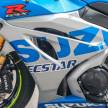
Reach to the handlebars is moderate but be warned, you will find yourself forced into a racing crouch, there is no other way to ride the GSX-R1000R. Those of you who have issues folding your “spare tank” into the bike’s fuel tank, you’re not going to find the GSX-R comfortable because, race bike.
In terms of foot position, the foot pegs on the GSX-R1000R are not set as far back as, say, the Aprilia RSV4. On the road, we didn’t have foot or foot peg clearance issues but those who intend turning the GSX-R1000R into a track weapon will want to install a proper set of racing rear sets for fine tuning to your riding position.
Inside the cockpit, a simple monochrome LCD display is used for bike-rider communication. No fancy colour screen or multiple gauge displays here, everything is straight forward and to the point, which is not necessarily a bad thing.
Rides who expect something like the instrument panel in the Panigale V4 will be disappointed but don’t let it be a deal breaker. The GSX-1000R doesn’t waste time on unnecessary frills, though market demand will probably drive Suzuki to include a colour screen like most everyone else in the market.
Just bear in mind Suzuki’s big Gixxer is meant to be used on the track, first and foremost, and as any competent track day enthusiast can tell you, there is little time to be looking at fancy graph displays and messing around with things like GPS and Bluetooth. Just the necessary information and even for us, riding the GSX-R1000 on the road, we only ever glanced at the speed readout, displayed in large numerals.
More attention was paid to the bar graph tachometer and shift light, both of which reached redline distressingly fast, with the left foot being called into play for the quickshifter tap dance. Gear changing using the quickshifter was seamless and smooth with the throttle held wide open and gunning for the horizon, the clutch needing to be used at city traffic speeds.
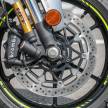

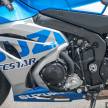
Otherwise, we had little issue with the gearbox itself, clutch pull being suitably light and no abrupt noises when being lazy with gear changes. Ratios in the gearbox are closely matched to the engine’s power delivery, of which a fair amount of engineering tech comes into play.
The one thing we really liked about the GSX-R1000R was winding the throttle open in fourth gear just to hear the mechanical symphony of sounds. First off, the 999.8 cc inline-four which uses both liquid and oil-cooling comes with what Suzuki calls Suzuki Racing Variable Valve Timing System (SR-VVT).
No big surprises here, the centrifugally activated intake valve timing – the GSX-R1000R comes with titanium inlet and exhaust valves – delivers a noticeable amount of power at the top-end, all the way to the 14,500 rpm redline. Not that it comes in a mad rush, we guess you’ll need a race kit for that, but the urge from the GSX-R as the power propels it forward is very addictive.
The technological wizardry continues with sacked intake funnels, optimised for low and top end air flow on cylinders one and four, the acclaimed Suzuki Ram Air Direct (SRAD) intake and twin valves in the balancer pipes and the exhaust valve itself all serving to make the GSX-R1000R powerful and docile, all at the same time. Something to bear in mind though, many have remarked on the huge exhaust can on the GSX-R1000R, which, for 2021, has been painted black to disguise some of its bulk.
During the photography session for the GSX-R1000R, Patrick remarked, “dude, I could hear you making that u-turn a kilometre away and gunning through the gears. About five minutes after we wrapped for shooting, a police car turned up.” So, bear this mind if you’re riding in a built-up area.
Keep it below 6,000 rpm and you’ll be fine. Open up that ride-by-wire throttle above 7,000 rpm, let the SR-VVT kick in and things get loud, suddenly and quickly.
Inside the press kit, Suzuki makes comment about the redesigned radiator, now optimised to use less coolant but with increased flow efficiency. In practice, if you’re riding through town in traffic or at standstill at a traffic light, you’re going to feel a lot of engine heat rising.
Just something to be aware of in case you’re entertaining thoughts of making the GSX-R1000R your daily ride. Speaking of daily riding, if you’re wanting to bring a pillion along, well, he or she had better like you a whole lot because that pillion perch isn’t much of anything, you’d do better replacing the passenger seat with a race cowl and throwing the pillion pegs away.
Electronics wise, the GSX-R1000R comes with a six-axis inertial measurement unit giving the usual riding aids like cornering ABS, 10-mode traction control, three power delivery modes, launch control, wheelie control, rear wheel lift control and low RPM assist which prevents the the bike stalling when starting from first gear. Single-press starting is used, the rider only needing to depress the button for a moment before the ECU takes over and starts the engine with a 1.5 second cranking cycle.
However, for riders used to the multi-customisable menus found in superbikes such as the S1000RR or Panigale V4, the GSX-R1000R’s menu navigation is less than intuitive which requires a lot of button pressing and hunting around. Not that it matters much, as the GSX-R1000R comes with no electronic adjustment for the suspension, making the setup more a case of ensuring you’re in the correct traction control, ABS and ride modes.
As for the suspension itself, the GSX-R1000R comes with a fully-adjustable Showa Big Piston Front Fork (BPF) in front and Showa monoshock at the back, fully-adjustable with separate adjustment for high- and low-speed compression damping. In standard settings, the GSX-R1000R handled very well, a welcome surprise after the effort we had to expand riding the L5 and L7 at the racetrack.
While not being as sublime as the suspension used on the Panigale V4, or as wide-ranging as the units on the S1000RR, the GSX-R1000R handled, and handled very well indeed. Tipping into a corner needed just a very light touch of counter steering, and powering out of the corner came down to how well the rider can feel the available traction.
At low speeds over rough surfaces, everything gets transmitted through the seat, with surface irregularities like speed bumps enough to jolt the rider out of the seat if not prepared. Again, the GSX-R1000R is biased to the regular surface of a race track, and we cannot fault it for this.
Those are the good parts, what about the bad? Aside from the earlier mentioned engine heat, there was a considerable amount of vibration coming through the handlebars. This won’t matter much when riding with the red mist on the track chasing down the rider in front but it certainly doesn’t make the GSX-R1000R a comfortable highway cruiser.
There was no real noticeable vibration coming through the seat or foot pegs, which made the vibration coming through the handlebars all the more noticeable. Which brings us to perhaps the GSX-R1000R’s biggest shortcoming, the brakes.
The supplied items are radial-mount four-piston Brembo Monoblocs, and in general road use, are perfectly adequate, certainly more braking power than most riders will need, or use. Unfortunately, the author’s yardstick is Brembo M50s as installed on his personal motorcycle, and perhaps the gold standard for braking on superbikes, Brembo Stylema callipers.
Not to say the brakes didn’t stop the GSX-R, they did, but lacked a certain amount of bite and feel that we’ve grown accustomed to. If you want to race the GSX-R1000R, a switch to proper Brembo race items will be necessary and for all other purposes, look to a set of aftermarket brake pads with pad compounds suited to spirited road riding.
All in all, we found the GSX-R1000R capable, good handling and with good power delivery, coming with 202 PS and 117.6 Nm of torque on tap. The power itself was easy to control and we dare say the GSX-R will suit most every type of rider with sporting intent.
So, who needs the 2021 Suzuki GSX-R1000R, priced at RM110,280 – the GSX-R1000 with identical power but lower rated suspension comes in at RM99,289. If you’re a sports rider carving up the canyons of Ulu Yam, you’ll find the GSX-R1000R easy to ride and handle along with that hallowed GSX-R badge.
If you’re going to take the GSX-R1000R racing seriously, some component upgrades will need to be made, starting with brakes and rear sets. As for the author, who had a short stint racing GSX-R750s back in the dark days of the 80s, welcome back, Suzuki.

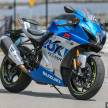


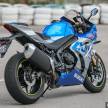
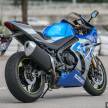
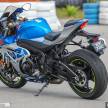

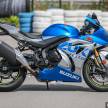

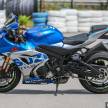
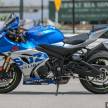






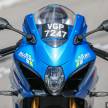





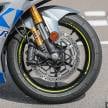

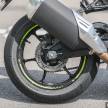
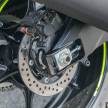
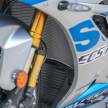
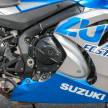
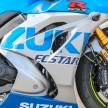
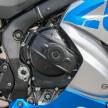
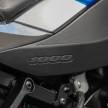
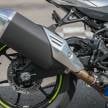
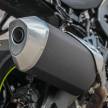


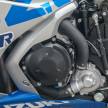



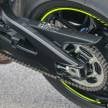






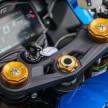



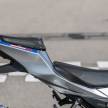
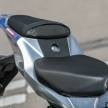
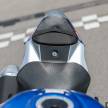


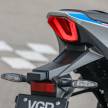










The post REVIEW: 2021 Suzuki GSX-R1000R – RM110k, Suzuki’s legendary superbike returns to Malaysian roads appeared first on Paul Tan's Automotive News.

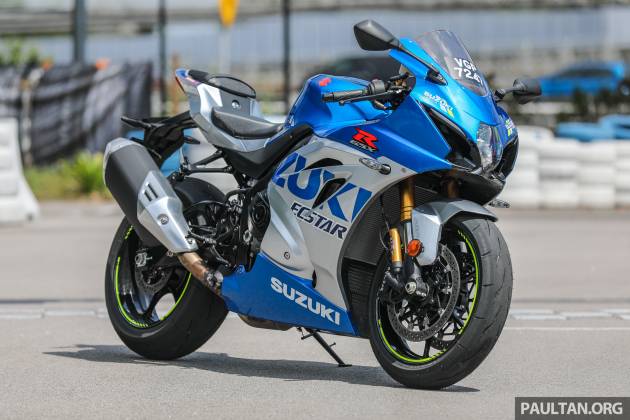
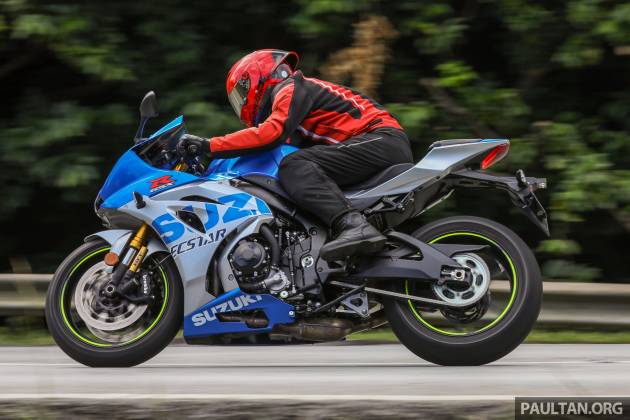
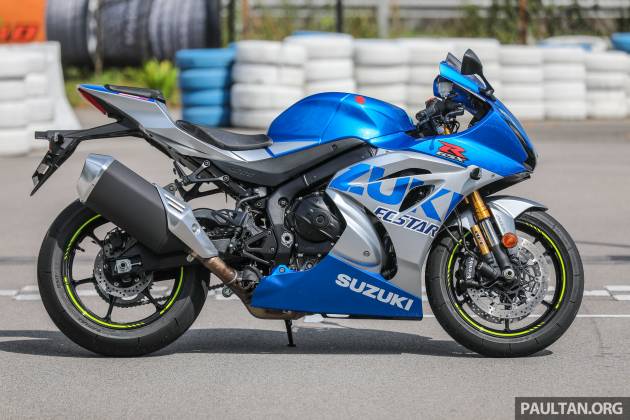
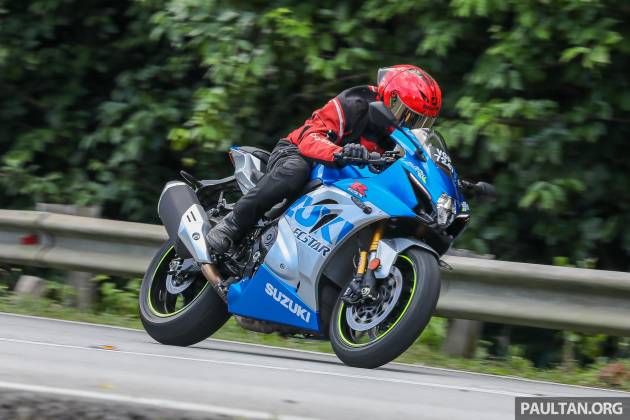
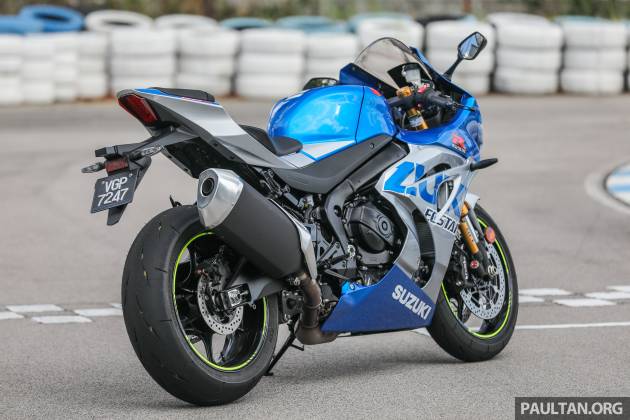
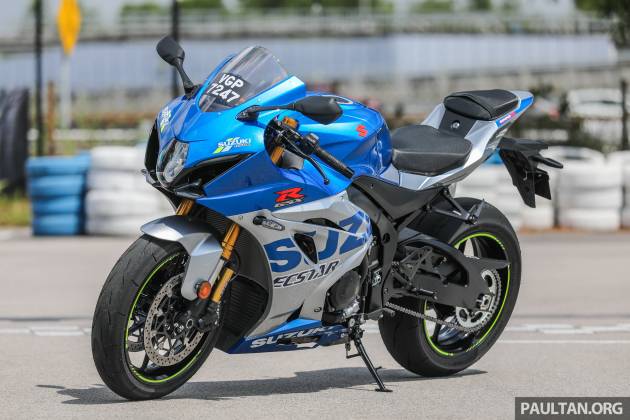
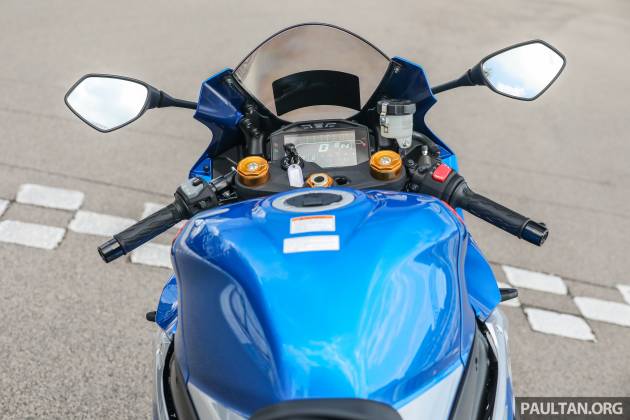
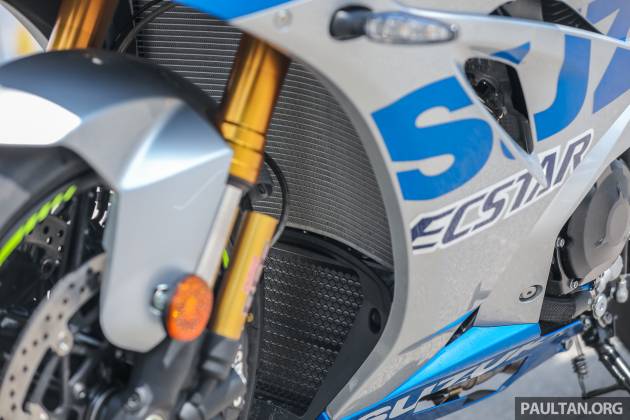
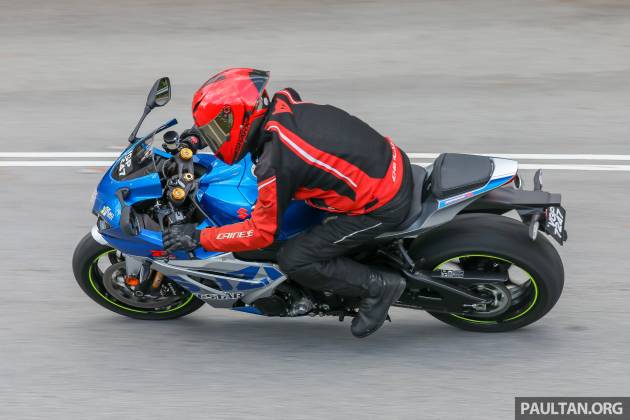


0 Comments